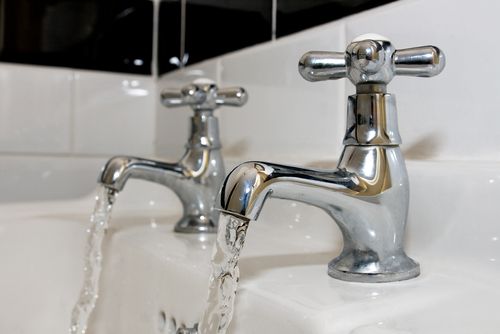 |
Early in 2014, the Natural Resources Defense Council (NRDC) and the United Association of Journeymen and Apprentices of the Plumbing and Pipefitting Industry (UA) joined forces to create a proposal for new plumbing codes that will require the insulation of hot water piping in new buildings. In late April, the proposal was officially and “overwhelmingly” approved by a vote during review of proposed changes to the Uniform Plumbing Code, authored by the International Association of Plumbing and Mechanical Officials (IAPMO). According to the proposal, all new residential and commercial buildings constructed after 2015 will be required to meet the new code, which is currently the model for local and state plumbing codes in 19 states.
According to the NRDC, a 2009 modeling report by the National Renewable Energy Laboratory (NREL) “estimated that more than 10 percent of all the hot water drawn for showering in a typical single-family home is not hot enough to use.” Considering that Americans shower more than 200 million times each day, and using the Environmental Protection Agency’s (EPA) estimates for water drawn for showers, “about 280 million gallons of hot water is being discarded without use every day, nationwide—an amount equal to all the water sold on an average day last year by the Las Vegas Valley Water District.” Not only is the water wasted, however, the energy to heat it also goes down the drain unused.
Forget expensive calls to lawyers and consultants. With Enviro.BLR.com, you get instant access, 24/7. Try it out today and get the 2014 EHS Salary Guide, absolutely free. Download Now.
Another consideration, according to the NRDC, is that about 25 percent of all hot water draws occur fairly close together, so hot water standing in insulated pipes will be much more likely to retain the necessary heat for the next user. Furthermore, the IAPMO noted the NREL study showed that in a three-bedroom, two-bath home, about 12 percent of all hot water used is wasted and purging of not-hot-enough water via showers and kitchen and bath faucets “was responsible for 95 percent of the estimated total of nearly 3,000 gallons of hot water waste annually.” With many homes being larger than the typical model and having more showers and faucets in use, the potential for savings over all could be considerable with the NRDC estimating that insulating hot water pipes could reduce both wasted water and energy by 15 to 30 percent.
Everything You Need for Environmental Compliance
Enviro.BLR.com puts everything you need at your fingertips, including practical RCRA, CAA, CWA, hazardous waste regulatory analysis and activity, news, and compliance tools. Try it at no cost or risk and get a FREE report.
This is not the IAPMO’s first go-round with sustainability in plumbing codes. In the early 1990s the Unified Plumbing Code mandated water efficient fixtures and fittings and the organization was the first of its kind to partner with EPA’s Water Sense Program that helps consumers make sustainable product choices. As part of its commitment to sustainability, the IAPMO is attempting to reach a 10-percent “mandatory reduction in energy usage and water savings through code changes that require sustainable construction practices over the next three years.” The Uniform Plumbing Code is currently under review to reach this mandate and the IAPMO is revising the 2012 edition of the “Green Plumbing and Mechanical Code Supplement” (GPMCS), which is anticipated to be released for public comment in October 2014.
